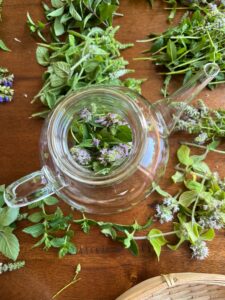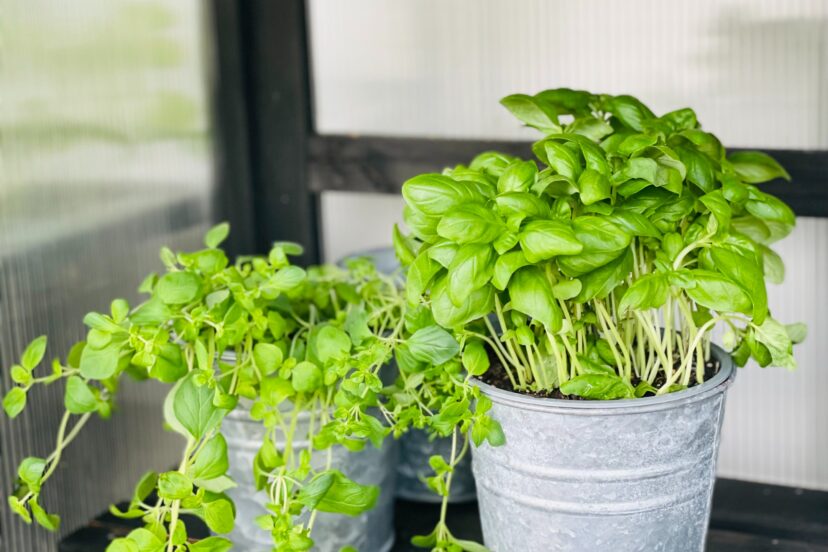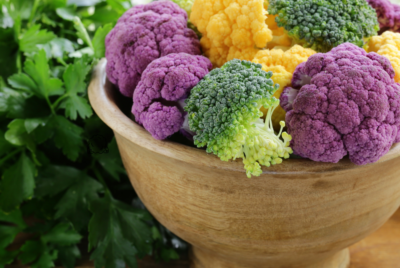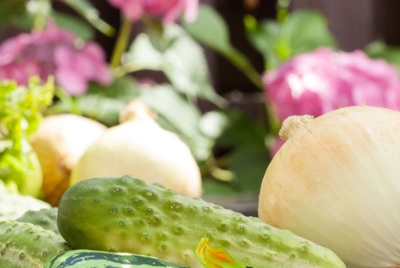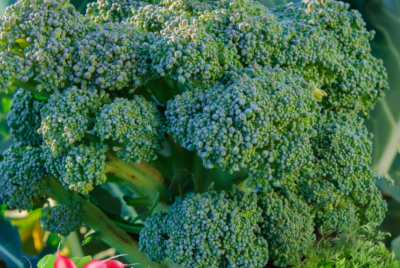Oregano Companion Plants
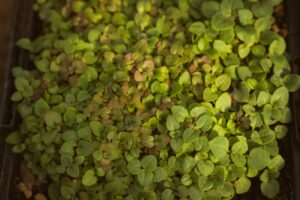
Oregano Companion Plants
1.Introduction: Oregano Companion Plants
Hello there, today I’m excited to share with you the magic of growing oregano alongside other plants. This ancient practice not only enhances the vitality of your garden but also brings a harmonious balance to your little green world.
Significance of Companion Planting
Companion planting, an age-old gardening practice, holds significant value for modern gardeners. It’s not just about beautifying spaces; it’s a strategic approach to gardening that enhances plant growth, soil health, and biodiversity. By thoughtfully pairing plants, gardeners can naturally deter pests, improve pollination, and maximize space usage. This method encourages a symbiotic relationship between plants, leading to healthier, more productive gardens. It’s an eco-friendly way to cultivate a thriving garden ecosystem, emphasizing harmony and balance in nature.
2.Focus on Oregano
Oregano, a versatile and robust herb, is more than just a culinary favorite. It’s a valuable asset in any garden due to its numerous benefits. Firstly, oregano is a powerful natural pest deterrent, thanks to its strong scent that masks the aroma of neighboring plants, keeping unwanted insects at bay. Additionally, it attracts beneficial pollinators like bees and butterflies, essential for a healthy garden ecosystem. Oregano also enhances the flavor and growth of various companion plants, making it an ideal choice for companion planting. Beyond its garden utility, oregano is renowned for its medicinal properties, including antioxidant and anti-inflammatory effects, making it a multifaceted herb for both gardeners and health enthusiasts.
II. Understanding Oregano
1. Characteristics of Oregano
Oregano, scientifically known as Origanum vulgare, is a perennial herb that’s part of the mint family. It’s characterized by its small, oval-shaped leaves and a pungent, earthy aroma. Oregano typically grows to around two feet in height and produces purple flowers that are quite attractive to pollinators. It thrives in well-drained soil and enjoys full sun exposure, making it suitable for various climates. Oregano’s hardiness allows it to withstand different gardening conditions, making it a popular choice for both novice and experienced gardeners.
2. Benefits in Gardening
In gardening, oregano offers several advantages:
a. Pest Deterrent
Oregano’s strong scent naturally repels many garden pests, reducing the need for chemical pesticides.
b. Companion Planting
When planted alongside vegetables and other herbs, oregano can improve their growth and flavor. For example, it enhances the taste of vegetables like tomatoes and peppers.
c. Soil Improvement
Oregano helps in maintaining soil health by attracting beneficial organisms and providing ground cover, which reduces soil erosion.
d. Attracts Pollinators
The flowers of oregano are a magnet for bees and butterflies, which are crucial for pollination and a healthy garden ecosystem.
e. Medicinal Properties
Known for its medicinal uses, oregano can be a handy plant for home remedies, offering natural solutions for various ailments.
In summary, oregano is not just an herb for culinary use but a valuable contributor to a garden’s health and biodiversity. Its ease of growth, coupled with its numerous benefits, makes it a must-have in any gardener’s arsenal.
III. Best Companion Plants for Oregano
1. Vegetables and Herbs
Oregano pairs well with a variety of plants, particularly certain vegetables and herbs. Some of the best companions for oregano include:
a. Tomatoes
The classic pairing, oregano enhances the flavor of tomatoes and helps deter pests.

b. Peppers
Both bell and hot varieties benefit from oregano’s pest-repellent qualities.
c. Broccoli
Oregano helps ward off common pests that target broccoli.
d. Beans
Oregano’s strong scent masks beans from pests and may improve their overall health.
e. Basil
Planting basil alongside oregano can enhance the flavor of both herbs.
f. Thyme
Thyme and oregano share similar growing conditions and can benefit each other.
g. Rosemary
Another herb that enjoys the same type of soil and sun exposure as oregano.
2.Why They Work Well
These plant pairings are beneficial for several reasons:
a. Pest Control
Oregano’s strong aroma is a natural pest deterrent, protecting its companion plants.
b. Flavor Enhancement
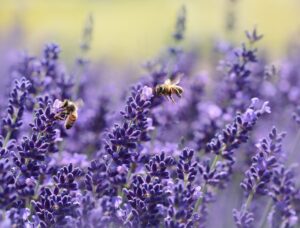
Certain herbs, when grown together, can improve each other’s taste, as seen with basil and oregano.
c. Similar Growing Conditions
Herbs like thyme and rosemary thrive under the same conditions as oregano, making them easy to grow together.
d. Soil Health
Companion plants often help maintain soil health by balancing nutrient levels and moisture.
e. Pollinator Attraction
Oregano attracts pollinators which are beneficial for the pollination of nearby plants, especially vegetables like tomatoes and peppers.
In essence, companion planting with oregano not only fosters a more resilient garden but also maximizes the productivity and flavor of the plants involved.
IV. Avoiding Unfriendly Companions
1.Plants to Avoid Near Oregano
While oregano is a friendly neighbor to many plants, there are some it doesn’t pair well with. These include:
a. Cucumbers
They have different watering needs compared to oregano.
b. Rue
It generally does not coexist well with many herbs, including oregano.
c. Brassicas (Cabbage, Cauliflower, Kale, etc.)
Oregano can inhibit the growth of brassicas. The strong aromatic oils of oregano may interfere with their development.
d. Fennel
Known for being a poor companion for most herbs and vegetables, fennel can inhibit the growth of oregano.
e. Corn
Oregano’s low water requirement contrasts with corn’s need for more consistent watering, making them incompatible.
f. Mint
While both are in the same family, mint tends to be very aggressive in its growth and can easily overwhelm oregano.
It’s essential to consider these incompatibilities when planning your garden to ensure all your plants thrive without hindering each other’s growth.
2.Reasons for These Restrictions
The primary reasons for these restrictions are:
Differing Water Needs
Oregano, being drought-tolerant, requires less water, which conflicts with the needs of plants like cucumbers that require consistent moisture.
Growth Inhibition
Certain plants like rue can inhibit the growth of oregano due to their strong allelopathic properties, which can affect the soil composition and nutrient availability.
These restrictions highlight the importance of understanding each plant’s specific needs and characteristics to create a harmonious and productive garden ecosystem.
V. The Role of Oregano in Pest Control
1. Natural Pest Deterrents
Oregano plays a significant role in natural pest control in gardens. It contains compounds like thymol and carvacrol, which are known for their strong aromatic properties. These natural compounds make oregano an effective deterrent against a variety of pests, reducing the need for chemical pesticides. By simply growing oregano, gardeners can leverage its scent to create a protective barrier around more susceptible plants.
2. Specific Pests Deterred by Oregano
Some of the specific pests that are known to be deterred by oregano include:
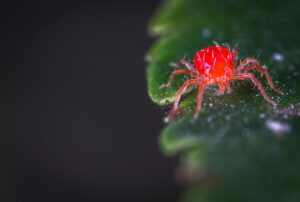
a. Aphids
These small, sap-sucking pests can be a nuisance, but they dislike the strong scent of oregano.
b. Cabbage Moths
Oregano can help protect brassicas like cabbage and kale from these pests.
c. Cucumber Beetles
Often a problem for cucumber plants, these beetles can be kept at bay with oregano nearby.
d. Spider Mites
These tiny pests, which can damage a wide range of plants, are repelled by oregano’s strong aroma.
By incorporating oregano into the garden, it serves as a natural and eco-friendly way to manage pests, promoting a healthier and more balanced garden ecosystem.
VI. Enhancing Growth: Oregano Companion Plants
1. Nutrient Sharing
Oregano can positively influence the growth of neighboring plants through nutrient sharing. This herb is not a heavy feeder, meaning it doesn’t deplete the soil of essential nutrients. Instead, oregano can help maintain a balanced nutrient profile in the soil. Its roots system can aid in loosening the soil, improving aeration and facilitating better nutrient absorption for nearby plants. Additionally, when oregano decomposes, it contributes organic matter, enriching the soil.
2. Soil and Water Needs
Oregano is well-suited to a variety of soil types, but it thrives best in well-drained soil. It prefers a slightly more alkaline pH. Being drought-tolerant, oregano requires less frequent watering compared to many other garden plants. This low water requirement is beneficial for plants that also prefer drier conditions. However, it’s important to be mindful of this when planting oregano near plants with higher water needs, as their requirements might conflict. Ideally, oregano should be paired with plants that have similar soil and water preferences to ensure harmonious growth.
VII. Oregano Companion Plants and Pollinators
A. Attracting Beneficial Insects
Oregano is a potent attractor of beneficial insects to the garden. Its tiny, nectar-rich flowers are irresistible to many insects that play a crucial role in pollination and pest control. By flowering for an extended period, often throughout the summer, oregano provides a consistent food source for these beneficial insects. This not only aids in pollination but also contributes to maintaining a natural balance in the garden ecosystem, reducing the need for chemical insecticides.

B. Types of Pollinators
The types of pollinators commonly attracted to oregano include:
a. Bees
Both honeybees and native bees are frequent visitors to oregano flowers. They play a vital role in pollination, ensuring the production of seeds and the continuation of various plant species.
b. Butterflies
Oregano’s flowers are a nectar source for butterflies. Their presence adds beauty to the garden and aids in pollination.
c. Hoverflies
Known for their pest control abilities, hoverflies feed on common garden pests like aphids. They are attracted to oregano’s flowers for both nectar and as a place to lay eggs.
In summary, by planting oregano, gardeners can naturally enhance the attractiveness of their gardens to these beneficial pollinators, fostering a more vibrant and productive garden environment.
VIII. Thyme: A Special Mention
1. Similarities with Oregano
Thyme, like oregano, is a member of the mint family and shares several similarities:
a. Growing Conditions
Both thyme and oregano thrive in well-drained soil and full sun. They are both drought-tolerant and prefer similar soil pH levels.
b. Pest Deterrent
Similar to oregano, thyme has a strong scent that naturally repels certain garden pests.
c. Culinary Use
Both herbs are widely used in cooking, known for their aromatic and flavorful contributions to a variety of dishes.
d. Medicinal Uses
Thyme and oregano both possess medicinal qualities, such as antimicrobial and anti-inflammatory effects.
2. Unique Uses of Thyme
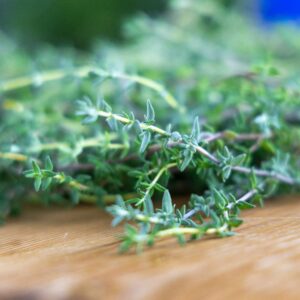
While thyme shares characteristics with oregano, it also has its unique uses:
a. Culinary Diversity
Thyme is used in a wider range of culinary styles, from European to Middle Eastern cuisines.
b. Ornamental Uses
Certain varieties of thyme, like creeping thyme, are used as ornamental ground covers due to their aesthetic appeal.
c. Therapeutic Uses
Thyme is often used in aromatherapy and herbal medicine for its therapeutic properties, especially in respiratory and throat ailments.
d. Pollinator Attraction
Like oregano, thyme attracts beneficial insects, but it tends to bloom earlier, providing an early source of nectar in the garden.
In summary, while thyme and oregano share many similarities, thyme’s unique qualities make it a distinct and valuable addition to any garden or kitchen.
IX. Medicinal Benefits of Oregano
1. Historical Uses
Oregano has been valued for its medicinal properties for centuries across various cultures:
a. Ancient Greece
In Greek mythology, oregano was believed to be created by the goddess Aphrodite. Ancient Greeks used it for treating skin irritations and wounds, believing it had antiseptic properties.
b. Roman Empire
The Romans adopted oregano for its health benefits, particularly for digestive and respiratory ailments.
c. Traditional Chinese Medicine
Oregano was used in China to treat fever, vomiting, diarrhea, jaundice, and itchy skin conditions.
d. Middle Ages
During this period, oregano was commonly used across Europe for treating rheumatism, toothache, indigestion, and as a general tonic to improve health.
2. Modern-Day Applications
In contemporary times, oregano’s medicinal uses have been supported by scientific research:Antimicrobial Properties
Oregano oil is found to be effective against a range of bacteria, including antibiotic-resistant strains, making it valuable in fighting infections.
a. Antioxidant
Oregano is rich in antioxidants, which help in neutralizing free radicals and reducing oxidative stress in the body.
b. Anti-inflammatory
It’s used to alleviate inflammation, particularly in conditions like osteoarthritis.
c. Digestive Health
Oregano is believed to aid digestion and help relieve bloating and gastrointestinal discomfort.
d. Respiratory Health
Its expectorant properties make it beneficial in treating coughs and colds.
e. Cancer Research
Preliminary studies suggest that the compounds in oregano may have anti-cancer properties, though more research is needed in this area.
The medicinal benefits of oregano, both historical and modern, illustrate its enduring value as a natural remedy for a wide range of health issues.
Oregano, renowned for its culinary and medicinal qualities, offers several unique uses that extend beyond these common applications:
a. Natural Antibiotic
Oregano oil, particularly rich in carvacrol and thymol, is known for its strong antibacterial properties. It’s often used as a natural antibiotic to treat bacterial infections.
b. Anti-inflammatory Properties
Oregano has been traditionally used to reduce inflammation. Its compounds can help in treating conditions like osteoarthritis and muscle pain.
c. Garden Companion Plant
As a companion plant, oregano plays a vital role in organic gardening by repelling pests and attracting beneficial insects, thus promoting a healthier garden ecosystem.
d. Preservative
Due to its antibacterial qualities, oregano is used as a natural preservative in food products, extending their shelf life while adding flavor.
e. Aromatherapy
Oregano’s strong aroma is used in aromatherapy to help clear the nasal passage and relieve respiratory issues.
f. Skin Care
Oregano oil, diluted in a carrier oil, can be applied to the skin to treat issues like acne and dandruff due to its antifungal and antibacterial properties.
g. Herbal Teas
Oregano leaves are used in herbal teas for their potential digestive benefits and to help alleviate symptoms of colds and coughs.
h. Culinary Versatility
Beyond Italian cuisine, oregano is used in a variety of culinary traditions, adding depth to spicy, savory, and even some sweet dishes.
These unique uses highlight oregano’s versatility, making it a valuable herb both in the garden and for various health and culinary purposes.
X. Culinary Uses of Oregano
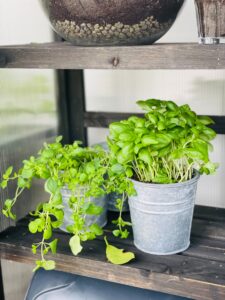
1. Popular Recipes
Oregano is a versatile herb widely used in various cuisines worldwide, lending its distinctive flavor to numerous dishes:
a. Italian Cuisine
It’s a staple in Italian cooking, essential in classic recipes like pasta sauces, pizza, and lasagna.
b. Greek Dishes
Oregano is key in Greek salads, marinated olives, and dishes like moussaka.
c. Mexican Cuisine
Used in Mexican spice blends, it flavors tacos, enchiladas, and salsas.
d. Meat Marinades
Oregano pairs well with lemon and garlic for marinating chicken, lamb, or beef.
e. Vegetarian Dishes
It enhances vegetarian recipes like grilled vegetables, soups, and stews.
f. Breads and Cheeses
Oregano is often added to bread doughs or sprinkled on cheeses for an aromatic touch.
2. Pairing with Other Herbs
Oregano works well with a variety of other herbs, creating complex flavor profiles:

a. Basil
Common in Italian cooking, this pairing is a cornerstone of many pasta sauces and pizza toppings.
b. Thyme
Together with oregano, thyme adds depth to Mediterranean and Middle Eastern dishes.
Rosemary: This combination is excellent for marinating meats or in roasted vegetable dishes.
c. Cilantro
In Mexican cuisine, oregano and cilantro are often combined for a vibrant flavor in salsas and taco fillings.
d. Parsley
Adds freshness to oregano’s robust flavor, balancing it in sauces and salads.
e. Sage
This duo is great in stuffing and pairs well with pork and poultry dishes.
Oregano’s culinary uses, both in traditional recipes and in combination with other herbs, highlight its role as a flavor-enhancer in a wide array of dishes. Its ability to blend with different herbs allows for creative and varied cooking applications.
XI. Tips for Growing Oregano
1. Ideal Growing Conditions
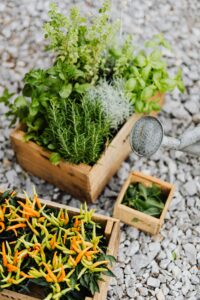
To cultivate healthy oregano plants, consider the following growing conditions:
a. Sunlight
Oregano thrives in full sun. It needs at least six to eight hours of direct sunlight each day.
b. Soil
Well-drained soil is crucial. Oregano prefers a slightly alkaline soil with a pH between 6.0 and 8.0.
c. Watering
Water oregano moderately. It’s drought-tolerant and doesn’t like to sit in wet soil. Allow the soil to dry out between waterings.
d. Spacing
Plant oregano 8 to 10 inches apart to give it room to spread.
e. Temperature
It grows well in warm conditions but can tolerate cooler temperatures, making it suitable for various climates.
2.Harvesting and Storage
To maximize the use of your oregano read the following:

a. Harvesting Time
The best time to harvest oregano is just before the plant flowers, when the oils and flavors are at their peak.
b. Method of Harvesting
Snip sprigs of oregano using scissors or garden shears. You can harvest up to two-thirds of the plant at once.
c. Drying
To dry oregano, tie the cuttings in small bunches and hang them upside down in a warm, dry, and well-ventilated area away from direct sunlight.
d. Storage
Once dried, store the oregano in an airtight container in a cool, dark place. You can also freeze fresh oregano sprigs in an airtight bag.
Following these tips will help ensure a bountiful and flavorful harvest of oregano, ready to enhance your culinary creations or for use in various home remedies.
XII. Conclusion on Oregano Companion Plants
1. Recap of Benefits
Oregano is much more than a culinary herb; it’s a versatile plant that enriches gardens in multiple ways. Its ability to repel pests, attract beneficial pollinators, and coexist harmoniously with a range of plants makes it an invaluable addition. The herb’s medicinal properties, from antimicrobial to anti-inflammatory effects, extend its usefulness beyond the kitchen.
2. Encouragement for Companion Planting
I encourage all gardeners, whether novice or experienced, to explore the wonders of companion planting with oregano. Its low maintenance and multiple benefits make it a rewarding choice. Embrace the symbiotic relationships it fosters in your garden for a healthier, more vibrant, and sustainable gardening experience.
FAQs on Oregano Companion Plants
1: Can I grow oregano indoors?
Answer: Absolutely! Oregano grows well indoors provided it receives enough sunlight. Place it near a south-facing window where it can get at least six hours of direct sunlight daily. Ensure the pot has good drainage and water it when the soil feels dry.
2: How often should I water oregano?
Answer: Water oregano moderately, allowing the soil to dry out between waterings. Overwatering can lead to root rot, so it’s crucial to let the soil dry slightly. Typically, watering once a week is sufficient, but adjust based on the humidity and temperature.
3: When is the best time to plant oregano?
Answer: Plant oregano in the spring, after the last frost, when the soil has warmed up. This timing gives the plant the best chance to establish itself before the hot summer months.
4: Can oregano help with garden pest control?
Answer: Yes, oregano is great for garden pest control. Its strong scent naturally deters many pests like aphids and cabbage moths, making it a valuable plant in organic pest management.
5: Is oregano only used in Italian cooking?
Answer: No, oregano is not limited to Italian cooking. It’s a versatile herb used in a variety of cuisines, including Greek, Mexican, and Middle Eastern. Its robust flavor enhances a wide range of dishes, from meats to vegetables.
